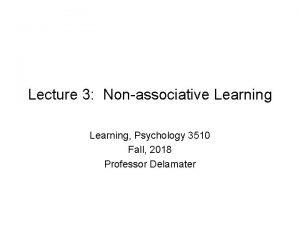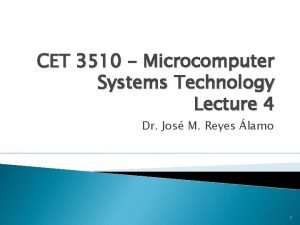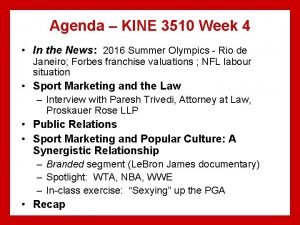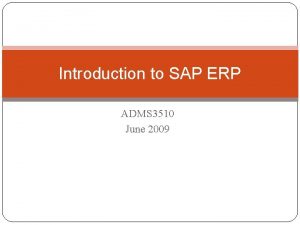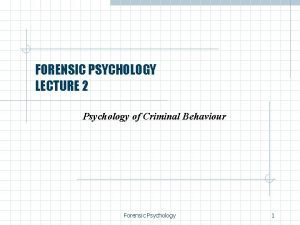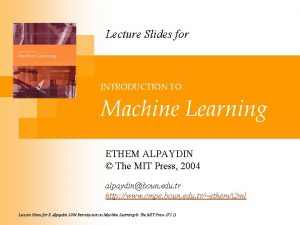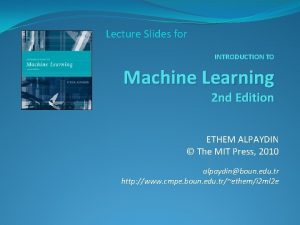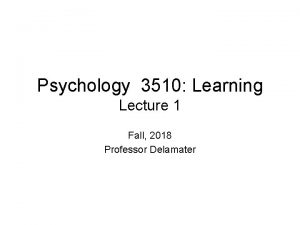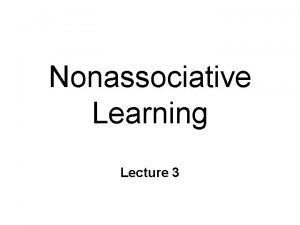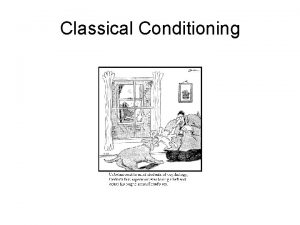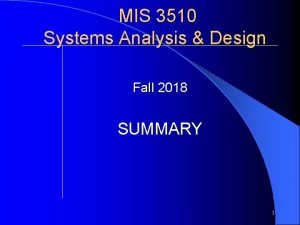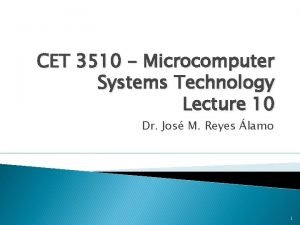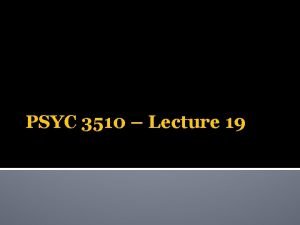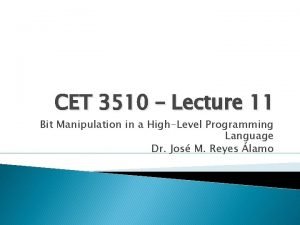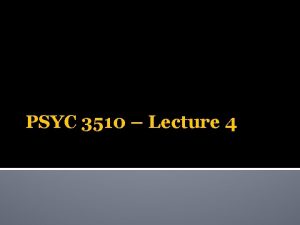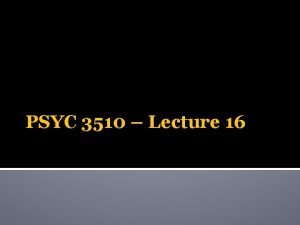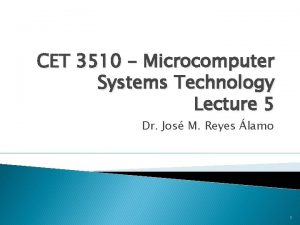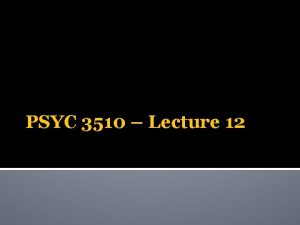Lecture 3 Nonassociative Learning Psychology 3510 Fall 2018





















- Slides: 21

Lecture 3: Non-associative Learning, Psychology 3510 Fall, 2018 Professor Delamater

Non-associative Learning Or, for the most part, changes in responsiveness to a single stimulus Three Types 1. Habituation 2. Dishabituation 3. Sensitization

Non-associative Learning: Habituation • • Learning to “tune” out the radio, or the siren, or background noise, etc Used to study sensory capacities in human infants, and, more generally, Simple learning processes in other organisms. Major headway in understanding the neural mechanisms in memory. Habituation – Decline in responsiveness to a stimulus with repeated exposures, but arising from “central” changes.

Non-associative Learning: Habituation • • Learning to “tune” out the radio, or the siren, or background noise, etc Used to study sensory capacities in human infants, and, more generally, Simple learning processes in other organisms. Major headway in understanding the neural mechanisms in memory. Habituation – Decline in responsiveness to a stimulus with repeated exposures, but arising from “central” changes. Women asked to rate the Pleasantness of a specific Taste stimulus. Also, the amount of Salivation was measured. Steady decreases with repeated exposures suggests habituation.

Non-associative Learning: Habituation – Decline in responsiveness to a stimulus with repeated exposures, but arising from “central” changes. How do we know this is due to a “central” change?

Non-associative Learning: Habituation – Decline in responsiveness to a stimulus with repeated exposures, but arising from “central” changes. Need to rule out sensory adaptation and motor fatigue (two “peripheral” change mechanisms).

Non-associative Learning: Habituation – Decline in responsiveness to a stimulus with repeated exposures, but arising from “central” changes. Need to rule out sensory adaptation and motor fatigue (two “peripheral” change mechanisms). But notice that Habituation is Stimulus-Specific!!! This rules out Motor Fatigue as an explanation of the decrease in responding. But what about Sensory Adaptation? ? ?

Non-associative Learning: Dishabituation – Recovery in responsiveness to an already habituated stimulus. Michael Davis: Studied Startle responding in the rat Tone 50 45 40 35 30 25 20 15 10 5 0 Stimulus Presentations ("Trials") Test Light - Tone 1 2 3 4 5 6 7 8 9 10 11 Mean Startle Response Dishabituation of the Startle Response in the Rat Presenting a Tone stimulus causes the rat to startle. But repeated presentations of this Tone results in progressively less startle responding.

Non-associative Learning: Dishabituation – Recovery in responsiveness to an already habituated stimulus. Michael Davis: Studied Startle responding in the rat Tone 50 45 40 35 30 25 20 15 10 5 0 Stimulus Presentations ("Trials") Test Light - Tone 1 2 3 4 5 6 7 8 9 10 11 Mean Startle Response Dishabituation of the Startle Response in the Rat Is this due to Habituation, Sensory Adaptation, or Motor Fatigue? The Startle response recovers on a test trial when Light is presented just before the Tone. The Light stimulus dishabituates the rats startle response to Tone, but does not itself produce startle responding. This rules out sensory adaptation, as well as motor fatigue.

Non-associative Learning: Short vs Long. Term Habituation Dishabituation – Recovery in responsiveness to an already habituated stimulus. Leaton (1976) Experiment: Studied Startle responding in the rat FIGURE 2. 10 Startle response of rats to a tone presented once a day in Phase 1, every 3 seconds in Phase 2, and once a day in Phase 3. (Based on “Long-Term Retention of the Habituation of Lick Suppression and Startle Response Produced by a Single Auditory Stimulus, ” by R. N. Leaton, 1976, Journal of Experimental Psychology: Animal Behavior Processes, 2, pp. 248– 259. ) Tones presented once a day produces lasting long term habituation. Tones presented every 3 s produces deeper habituation. But this does not last until the next day – short term habituation (shows spontaneous recovery). Short ISI leads to good short term habituation, but long ISI leads to good long term habituation. This means there are 2 different types of processes or “forms” of habituation.

Non-associative Learning: Sensitization – Increase in responsiveness to a stimulus when the stimulus is presented in an “arousing” context. Davis (1974) Experiment: Studied Startle responding in the rat FIGURE 2. 11 Magnitude of the startle response of rats to successive presentations of a tone with a background noise of 60 or 80 d. B. (Based on “Sensitization of the Rat Startle Response by Noise, ” by M. Davis, 1974, Journal of Comparative and Physiological Psychology, 87, pp. 571– 581. ) Tones presented in a relatively quite environment undergo habituation. Tones presented in a noisy environment undergoes sensitization.

Non-associative Learning: Sensitization – Increase in responsiveness to a stimulus when the stimulus is presented in an “arousing” context. Davis: Studied Potentiated Startle responding in the rat Experimental Procedure: Present Tone and measure startle responding Present Foot Shock, then Tone and measure startle responding The Tone produces more startle responding when it follows a Shock than when presented alone. The shock “potentiates” the startle response to the Tone probably because it “arouses” the rat.

Non-associative Learning: Sensitization Habituation & Sensitization processes both can affect responding at the same time. Habituation in the human infant Experimental Procedure: Present visual stimuli that vary in complexity and measure Looking time.

Non-associative Learning: Sensitization Habituation & Sensitization processes both can affect responding at the same time. Habituation in the human infant (Bashinski, Werner, & Rudy, 1985) Experimental Procedure: Present visual stimuli that vary in complexity and measure Looking time steadily decreases over trials as the infant habituates to the visual stimulus. Looking time first increases to the complex 12 stimulus (sensitization) before it decreases (habituation).

Non-associative Learning: Dual Process Theory (Groves & Thompson, 1970) Habituation & Sensitization processes both can affect responding at the same time. S-R System: State System: Habituation (processing of information from sensory to motor neurons) Sensitization (general process that can influence many neural pathways) Habituation should be stimulus specific Sensitization should be stimulus general because it relies on a general “state” system S-R System is stimulus specific State System (e. g. , arousal) affects many S-R circuits.

Non-associative Learning: Sensitization and Dishabituation Compared Dishabituation & Sensitization both increase responding. Do they have a common underlying substrate, e. g. , arousal? Hypothesis: If they have a common underlying substrate, then whenever one occurs the other should also occur. Marcus, Nolen, Rankin, & Carew (1988) Aplysia Study • Gill Withdrawal Response habituates, Dishabituates, and sensitizes • But they have different developmental onsets • That means dishabituation can occur without sensitization, so they must rely on different underlying substrates.

Non-associative Learning: Sensitization and Dishabituation Compared Dishabituation & Sensitization both increase responding. Do they have a common underlying substrate, e. g. , arousal? Hypothesis: If they have a common underlying substrate, then whenever one occurs the other should also occur. Whitlow (1975) Rabbit Study Trial Type A–A B–B A–B B–A Event 1 Tone 2 Tone 1 Tone 2 Event 2 Tone 1 Tone 2 Tone 1 } Same Trials } Different Trials • Vasoconstriction measured in response to different tone stimuli • Less responding to Event 2 on Same than Different trials indicates habituation

Non-associative Learning: Sensitization and Dishabituation Compared Dishabituation & Sensitization both increase responding. Do they have a common underlying substrate, e. g. , arousal? Hypothesis: If they have a common underlying substrate, then whenever one occurs the other should also occur. Whitlow (1975) Rabbit Study Trial Type A–A B–B A–B B–A A-x-A B-x-B A-x-B B-x-A • • Event 1 Tone 2 Tone 1 Tone 2 x x Event 2 Tone 1 Tone 2 Tone 1 } Same Trials } Different Trials } Same Trials + distractor } Different Trials + distractor Vasoconstriction measured in response to different tone stimuli Less responding to Event 2 on Same than Different trials indicates habituation More responding to Event 2 on Same + distractor than Same trials indicates dishabituation Equal responding to Event 2 on Diff + distractor and Diff trials shows NO sensitization

Non-associative Learning: Sensitization and Dishabituation Compared Dishabituation & Sensitization both increase responding. Do they have a common underlying substrate, e. g. , arousal? Hypothesis: If they have a common underlying substrate, then whenever one occurs the other should also occur. Whitlow (1975) Rabbit Study Trial Type A–A B–B A–B B–A A-x-A B-x-B A-x-B B-x-A Event 1 Tone 2 Tone 1 Tone 2 x x Event 2 Tone 1 Tone 2 Tone 1 } Same Trials } Different Trials } Same Trials + distractor } Different Trials + distractor • Results: Dishabituation can occur without Sensitization, indicating that these two processes must rely on different underlying substrates

Non-associative Learning Involving Complex “Emotional” Stimuli What is the situation with more complex stimuli? We’ve mostly considered what non-associative processes are engaged by presentation of relatively “simple” stimuli (tones, visual checkerboards, simple tastes, etc). What about more complex stimuli like drug administration, airplane jumping, falling in love? Can we say anything about the role of non-associative processes in these situations?

Non-associative Learning Involving Complex “Emotional” Stimuli Solomon and Corbit (1974): Opponent Process Theory Two opposing processes combine to produce an overall emotional effect, but one of these processes (the opponent “b” process) change over time and the other (“a” process) does not. This leads to a decreased emotional response when stimulus occurs, but a lasting opponent response when the stimulus is removed. Initial Exposure to Drug After Repeated Exposures to Drug
 Habituation psychology
Habituation psychology Define non associative learning
Define non associative learning 01:640:244 lecture notes - lecture 15: plat, idah, farad
01:640:244 lecture notes - lecture 15: plat, idah, farad Cet 3510
Cet 3510 Used pep 3510
Used pep 3510 Used pep 3510
Used pep 3510 Used pep 3510
Used pep 3510 Anaerobic exercise physiology
Anaerobic exercise physiology Telecharger formulaire cerfa 60-3510
Telecharger formulaire cerfa 60-3510 Adms 3510
Adms 3510 Pep 3510
Pep 3510 Que letra continua m v t m j
Que letra continua m v t m j Cuadro comparativo e-learning b-learning m-learning
Cuadro comparativo e-learning b-learning m-learning Social psychology lecture
Social psychology lecture Forensic psychology lecture
Forensic psychology lecture Introduction to psychology lecture
Introduction to psychology lecture Psychology lecture for medical students
Psychology lecture for medical students Machine learning lecture slides
Machine learning lecture slides Ethem alpaydin
Ethem alpaydin Introduction to machine learning slides
Introduction to machine learning slides Lifelong learning conference 2018
Lifelong learning conference 2018 Positive psychology ap psychology definition
Positive psychology ap psychology definition
